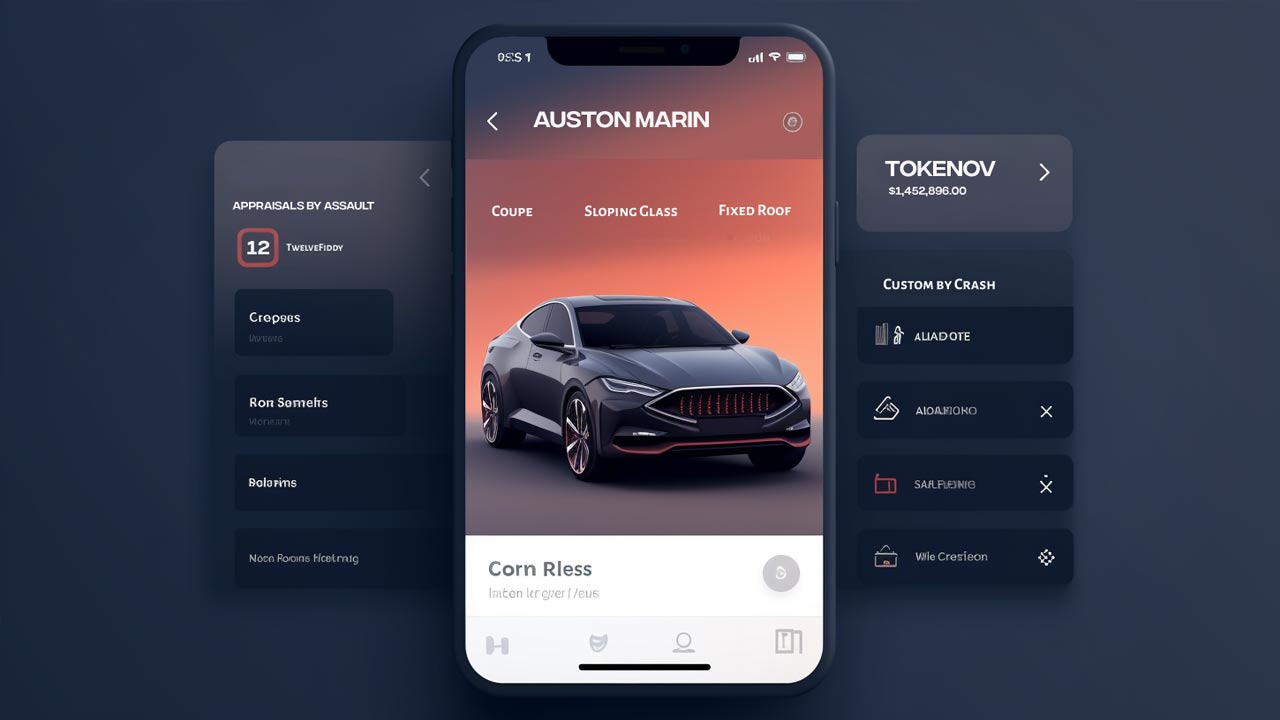User Experience Signals 101, Understanding the nuances of website UX signals is critical for businesses, designers, developers, and marketers alike. This comprehensive article aims to guide you through the intricacies of website UX signals – the subtle cues and features on a website that influence a user’s interaction, satisfaction, and overall experience.
Understanding and optimizing these UX signals can significantly enhance your website’s usability, engagement, conversions, and search engine ranking. After all, a positive UX encourages users to stay longer, interact more, and potentially convert – either by making a purchase, subscribing, or completing any other desired action.
This article will teach you about the key website UX signals, their relevance, and how to optimize them for better user engagement and conversion. We’ll discuss UX signal categories like website speed, usability, mobile-friendliness, security, and content quality. The article will also take a deeper look at advanced metrics like Core Web Vitals, dwell time, and click-through rates, and provide expert insights on improving them.
User Experience Signals 101
Table of Contents
- Understanding Website UX Signals
- Website Speed
- Usability
- Mobile-friendliness
- Security
- Content Quality
- Advanced UX Metrics
- Optimizing UX Signals
- Frequently Asked Questions
- Final Thoughts
- Sources
User Experience Signals: Understanding the Basics
Website User Experience signals refer to the variety of metrics, cues, and elements on a website that influence a user’s experience and interactions with the site. They can indicate how easy or enjoyable the site is to use, how effectively it fulfills a user’s needs or objectives, and how it shapes a user’s overall impression of the brand or organization behind the site.
The significance of UX signals lies in their direct impact on user behavior, satisfaction, and engagement. According to the 2020 UX Design Report by Loop11, a user-friendly website can increase a user’s satisfaction by 52% and loyalty by 74%. Furthermore, a well-designed UX can significantly boost conversion rates – in fact, for every $1 invested in UX, there’s a return of $100, which is an ROI of a staggering 9,900% (Forrester Research).
UX signals fall under various categories, including but not limited to:
- Website speed: How quickly a site’s content loads can greatly affect a user’s perception and experience. According to a study by Google, 53% of mobile site visitors leave a page that takes longer than three seconds to load.
- Usability: This encompasses elements like site navigation, user interface design, accessibility, and intuitiveness. The more intuitive and easy-to-navigate a website is, the better the user experience.
- Mobile-friendliness: With the majority of global web traffic coming from mobile devices, a site’s mobile-friendly design plays a critical role in its UX.
- Security: Users need to feel that their data is safe. Sites that lack security signals like HTTPS or those with frequent security issues can erode trust and provide a negative user experience.
- Content Quality: High-quality, relevant, and engaging content can enrich a user’s experience and encourage them to stay longer and interact more with the site.
Beyond these basic categories, UX signals also involve more advanced metrics that offer a deeper insight into user behavior and site performance, such as Core Web Vitals, dwell time, and click-through rates (CTR). By understanding and optimizing these UX signals, you can significantly enhance your website’s user experience and, subsequently, your business outcomes.
Website Speed
Website speed, or page load time, is a critical User Experience Signal as it directly affects a user’s first impression of your site. It refers to how quickly a website’s content appears on a user’s screen. This includes the time taken to load all elements of a page, such as text, images, scripts, and third-party resources.
A study by Google found that as page load time goes from 1 to 10 seconds, the probability of a mobile user bouncing increases by 123%. Additionally, a 100-millisecond delay in load time can cause conversion rates to drop by 7% (Akamai). These statistics underscore the crucial role that website speed plays in user engagement and conversions.
Speed affects several aspects of the user experience:
- User Satisfaction: Fast-loading websites are synonymous with efficiency and respect for users’ time. A speedy site is more enjoyable to use, leading to higher user satisfaction.
- Bounce Rate: Slow websites often have high bounce rates as users are likely to leave if a page doesn’t load quickly.
- SEO: Google includes page speed in its ranking algorithms. Faster websites are more likely to rank higher in search engine results pages (SERPs), leading to increased visibility and traffic.
- Conversions: If your site is an e-commerce platform, speed is even more crucial. Shoppers can easily become frustrated with slow load times, leading to abandoned carts and lost sales.
To improve your website’s speed, you can:
- Optimize Images: Large, high-resolution images can slow down your website. Compress images and use the correct file types to reduce load time.
- Use a Content Delivery Network (CDN): CDNs store cached versions of your website on a network of servers located around the world, helping to reduce the distance between a user and your server.
- Reduce HTTP Requests: Minimizing the number of requests your website makes can significantly improve your load time. This can be done by reducing the number of elements on each page, combining files, and using CSS instead of images where possible.
- Enable Browser Caching: This allows a user’s browser to store copies of your site’s individual pages, so it doesn’t need to reload the entire page every time the user visits your site.
Website speed is more than a technical metric; it’s a reflection of your brand’s respect for user’s time and can greatly impact your site’s success. Thus, prioritizing speed optimization is a key strategy for enhancing UX and achieving better business outcomes.
Usability
Usability refers to the ease of use of a website or an application, including how intuitive and easy it is for users to achieve their goals. As Jakob Nielsen, a leading web usability consultant, puts it, “Usability is a quality attribute that assesses how easy user interfaces are to use.” A high level of usability is vital for any successful website.
Several elements contribute to a website’s usability:
- Navigation: A website should have a clear and consistent navigation structure. This means using standard conventions like a top menu bar, breadcrumbs, and a footer with links. It should be easy for users to find what they’re looking for within a few clicks.
- Readability: The content on a website should be easy to read and understand. This can be influenced by the choice of font, font size, line spacing, color contrast, and the use of headings and subheadings to structure content.
- Responsiveness: A website should work equally well on different devices and screen sizes. Users should be able to navigate the website easily whether they’re using a desktop computer, a laptop, a tablet, or a smartphone.
- Accessibility: A website should be accessible to all users, including those with disabilities. This means following accessibility best practices like providing alternative text for images and ensuring that the website can be navigated using only a keyboard.
- Error Handling: If a user makes an error, the website should provide helpful feedback that helps them understand and correct the mistake. For example, if a user forgets to fill in a required field on a form, the website should highlight the field and explain what’s required.
Improving usability can lead to significant benefits for User Experience Signals. A study by Forrester Research found that a well-designed user interface could raise your website’s conversion rate by up to 200%. Furthermore, the same study found that a better UX design could yield conversion rates up to 400%.
To enhance usability, it’s recommended to conduct usability testing with real users. This involves watching users as they navigate the website and asking them to perform certain tasks, while they speak their thoughts out loud. The insights gained from this can then be used to make improvements. Tools like heatmaps and session recordings can also provide valuable insights into how users interact with a website.
Usability is a key UX signal that can have a profound impact on a website’s success. A website that is easy to use and intuitive will lead to a better user experience, increased engagement, and ultimately, higher conversions.
Mobile-friendliness
Mobile-friendliness refers to the design and development of a website that works seamlessly and effectively on mobile devices. Considering that mobile devices accounted for 54.8% of global website traffic in the first quarter of 2021, having a mobile-friendly website is no longer a luxury—it’s a necessity for User Experience Signals.
A mobile-friendly website not only adjusts to fit on different screen sizes (responsive design), but it also considers touch controls, optimizes content for a small screen, and minimizes load times. This usability aspect impacts several user experience signals:
- User Engagement: Mobile users are more likely to engage with a website if it’s optimized for their device. A site that is hard to navigate or read on a mobile device can frustrate users and lead to high bounce rates.
- SEO Rankings: Mobile-friendliness is a ranking factor in Google’s search algorithm. Websites that are not mobile-friendly may have lower visibility in search engine results, leading to less organic traffic.
- Conversions: If a website isn’t optimized for mobile, it could be losing out on potential conversions. A Google study found that 61% of users are likely to leave a mobile site if they can’t find what they’re looking for right away, and 67% of users are more likely to buy from a mobile-friendly site.
To optimize a website for mobile devices, consider the following strategies:
- Responsive Web Design: This approach ensures your website’s layout adjusts to fit the screen on which it is viewed. This includes resizing images and text and changing the layout to provide optimal viewing.
- Simplicity: Mobile screens are smaller than desktop screens, so it’s essential to keep the design simple. Make sure content is concise and navigation is clear.
- Touchscreen Readiness: Ensure all elements of the site are easily operable on touch devices. Buttons should be large enough to be easily tapped, and there should be plenty of space between clickable elements.
- Load Time: Mobile users often have slower internet connections than desktop users. Make sure your mobile site loads quickly by compressing images, minifying code, and leveraging browser caching.
- Test Your Website: Use tools like Google’s Mobile-Friendly Test to see how well your site works on mobile devices and get specific recommendations for improvement.
Mobile-friendliness is a key UX signal that directly influences user satisfaction, SEO rankings, and conversion rates. As mobile usage continues to grow, it’s crucial to prioritize mobile optimization to provide the best possible user experience.
Security
In an era where data breaches and cyber threats are all too common, website security is a critical component of the overall user experience. A secure website protects user data, maintains user trust, and ensures seamless navigation and transactions.
Website security refers to measures taken to prevent cyberattacks and protect sensitive user data. A secure website will typically feature HTTPS encryption, indicating that the data sent between the user’s browser and the website server is secure. In addition, it may include security measures such as two-factor authentication, CAPTCHA tests, and regular website security audits.
The importance of website security as a UX signal cannot be overstated:
- User Trust: Security measures reassure users that their personal information is safe. According to a GlobalSign survey, 85% of online shoppers avoid unsecured websites. Trust marks, such as SSL certificate badges, can also increase user trust and engagement.
- SEO Ranking: Google incorporates security into its search ranking algorithms. Websites with HTTPS are likely to rank higher in search results, driving more organic traffic.
- Data Protection: Security measures protect user data from breaches, which can lead to financial loss, brand damage, and legal consequences.
Here are some strategies to enhance your website’s security:
- Use HTTPS: Install an SSL certificate on your website to enable HTTPS. This encrypts the data transferred between your website and users’ browsers, protecting it from eavesdropping or tampering.
- Keep Software Up-to-Date: Outdated software is a common security vulnerability. Regularly update your website’s platform, plugins, and any other software to protect against known threats.
- Use Strong Passwords: Implement password requirements for users, such as a minimum length, special characters, and a mix of uppercase and lowercase letters.
- Regular Security Audits: Regular security audits can identify potential vulnerabilities. This can be done through automated security scans or hiring a cybersecurity specialist.
Website security is a crucial UX signal that directly impacts user trust, SEO rankings, and data protection. Implementing robust security measures is an essential part of providing a safe, positive user experience.
Content Quality
Content quality is a vital UX signal that significantly impacts how users perceive and interact with a website. It refers to the value, relevancy, accuracy, and readability of the information presented on the site. High-quality content enriches the user experience, boosts user engagement, and enhances the website’s search engine visibility.
Content quality can influence several aspects of the user experience:
- User Engagement: Well-crafted, relevant content can capture users’ attention, making them more likely to spend more time on your website and engage with your content.
- User Trust: High-quality content helps to establish authority and credibility, fostering trust with your users.
- SEO Rankings: Quality content is a significant factor in search engine rankings. Google’s algorithms favor content that is unique, relevant, and provides value to the user.
- Conversion Rates: Persuasive, well-structured content can guide users along the conversion path, leading to higher conversion rates.
To ensure your website’s content is high-quality, consider the following strategies:
- Value and Relevance: Ensure your content is highly relevant to your users and provides value. This could involve solving a problem, answering a question, providing new insights, or offering entertainment.
- Accuracy: Make sure your content is accurate and up-to-date. Inaccurate or outdated information can harm your credibility and user trust.
- Readability: Your content should be easy to read and understand. Use clear language, short sentences, and lots of white space. Break up text with headings, subheadings, and bullet points to make it more digestible.
- Originality: Google penalizes duplicate content, so make sure your content is unique. This not only improves your SEO but also helps your site stand out from competitors.
- Multimedia: Including relevant images, videos, infographics, and other multimedia can enhance your content and make it more engaging.
- Call to Action (CTA): High-quality content is not just about information; it also guides users towards a desired action. Include clear, persuasive CTAs that guide users to the next step, whether that’s making a purchase, signing up for a newsletter, or contacting your business.
The quality of your content plays a key role in user experience, SEO, and conversion rates. Investing in high-quality content is a valuable strategy for enhancing your website’s performance and achieving your business goals.
Advanced UX Metrics
In addition to the basic UX signals we’ve discussed, there are several advanced UX metrics that offer deeper insight into user behavior and site performance. These metrics help to identify opportunities for improvement and to measure the effectiveness of UX optimization efforts. Here are some of the most important advanced UX metrics:
- Dwell Time: This refers to the amount of time a user spends on your website before returning to the search engine results page. Longer dwell times can indicate that users find your content valuable and engaging, and it’s also a positive signal to search engines about your website’s quality.
- Click-Through Rate (CTR): The CTR measures the percentage of users who click on a specific link out of the total users who view a page, email, or advertisement. A high CTR can indicate that your titles and descriptions are compelling and relevant to users.
- Core Web Vitals: Introduced by Google, Core Web Vitals are a set of factors that contribute to the overall user experience on your website. These include Largest Contentful Paint (LCP), which measures loading performance; First Input Delay (FID), which measures interactivity; and Cumulative Layout Shift (CLS), which measures visual stability.
- Conversion Rate: This is the percentage of users who complete a desired action on your website, such as making a purchase, filling out a form, or signing up for a newsletter. Improving the user experience often leads to higher conversion rates.
- Exit Rate: The exit rate refers to the percentage of users who leave your website from a particular page after visiting any number of pages. A high exit rate on a particular page may indicate a UX issue that needs to be addressed.
- Heatmaps: Heatmap tools visualize user behavior on specific pages, showing where users click, scroll, and move their mouse. This can provide valuable insights into how users interact with your website, and help identify any potential UX issues.
By tracking and optimizing these advanced UX metrics, you can enhance your website’s user experience and performance. Whether you’re looking to increase engagement, improve search engine rankings, or boost conversions, these metrics can provide the insights you need to achieve your goals.
A Deeper Look into Core Web Vitals, User Interaction Indicators
Core Web Vitals are a set of user-centered metrics introduced by Google that measure the quality of user experience on a webpage. Google announced in May 2020 that Core Web Vitals would become ranking signals for search results in an update called the “Page Experience Update.” This update began rolling out in mid-June 2021.
The Core Web Vitals focus on three critical aspects of the user experience—loading, interactivity, and visual stability—and include the following metrics:
- Largest Contentful Paint (LCP): This measures loading performance. To provide a good user experience, LCP should occur within 2.5 seconds of when the page first starts loading.
- First Input Delay (FID): This measures interactivity. To provide a good user experience, pages should have an FID of less than 100 milliseconds.
- Cumulative Layout Shift (CLS): This measures visual stability. To provide a good user experience, pages should maintain a CLS of less than 0.1.
Here’s a deeper dive into each of these metrics:
Largest Contentful Paint (LCP): LCP measures the time it takes for the largest content element in the viewport to become fully visible. The largest element is typically a video, image, or large block of text. A faster LCP helps reassure the user that the page is loading.
First Input Delay (FID): FID measures the time from when a user first interacts with a page (clicks a button, taps a link, etc.) to the time when the browser can begin processing that interaction. A lower FID means that the page is more responsive.
Cumulative Layout Shift (CLS): CLS measures the amount of unexpected movement of page content while the page is still loading. A low CLS score ensures that the page is visually stable, preventing users from clicking or tapping the wrong element accidentally.
It’s crucial to optimize for these metrics to provide a high-quality user experience and improve your site’s visibility in Google search results. Google provides several tools to measure and improve Core Web Vitals, including Google Search Console, PageSpeed Insights, and Lighthouse.
By focusing on improving the loading, interactivity, and visual stability of your website, you can significantly enhance the user experience and potentially increase your site’s search engine rankings.
A Deeper Dive into Dwell Time, User Engagement Cues
Dwell time is a user-based metric that indicates the length of time a visitor spends on a webpage before returning to the SERPs (Search Engine Results Pages). While not a direct ranking factor used by Google, it is widely considered a critical UX signal by SEO professionals.
Dwell time is often seen as a measure of a webpage’s quality from a user’s perspective. When a user spends a significant amount of time on a webpage, it suggests that they have found the content relevant and valuable. Conversely, a short dwell time can indicate that the content was not useful, or the user experience was poor, prompting the user to return to the SERPs quickly.
Although Google has not officially confirmed the role of dwell time in their ranking algorithm, numerous SEO studies suggest a correlation between longer dwell times and higher search rankings. For example, a 2016 study by Searchmetrics found that the average dwell time for a top 10 Google result was 3 minutes and 10 seconds.
To increase dwell time on your website, consider implementing the following strategies:
- High-Quality Content: Ensure that your content is relevant, engaging, and provides value to the user. The more useful the content, the longer users are likely to stay on your page.
- User-Friendly Design: A clean, intuitive website design can encourage users to spend more time exploring your content. This includes clear navigation, easy-to-read text, and eye-catching visuals.
- Interactivity: Interactive elements such as videos, quizzes, or interactive infographics can engage users and encourage them to spend more time on your page.
- Page Speed: Fast loading times improve the user experience and increase the likelihood of users staying on your page longer.
- Internal Linking: By linking to relevant content on your website, you can encourage users to explore more pages and spend more time on your site.
Remember, while dwell time can provide valuable insights into user engagement and content quality, it’s just one of many metrics to consider when optimizing for user experience. Always focus on providing the best possible experience for your users, and the positive metrics will follow.
A Deeper Dive into Click-Through Rate (CTR), User Satisfaction
Click-through rate (CTR) is a metric that measures the ratio of users who click on a specific link to the number of total users who view a page, email, or advertisement. It is often used to gauge the success of an online advertising campaign or to evaluate the effectiveness of email marketing campaigns.
CTR is a crucial UX signal for a couple of reasons:
- User Engagement: A higher CTR indicates that users find your content engaging and relevant enough to warrant a click. It shows that your titles, descriptions, or calls-to-action successfully capture users’ attention and pique their interest.
- SEO Impact: While Google hasn’t confirmed that CTR is a direct ranking factor, many SEO experts believe it can influence search rankings. High CTRs can send positive signals to search engines about your content’s relevancy and value, potentially improving your visibility in search results.
Here are a few strategies to optimize your CTR:
- Compelling Titles and Descriptions: The title and meta description of your webpage appear in search engine results and can significantly influence whether users choose to click on your page. Make sure your titles and descriptions are engaging, accurately represent your content, and contain relevant keywords.
- Use of Structured Data: Structured data, or schema markup, can enhance your listings in search results with rich snippets, breadcrumbs, or sitelinks, which can increase visibility and improve CTR.
- Optimize for Mobile: With more than half of all web traffic coming from mobile devices, ensuring your website and content are mobile-friendly is essential to maximize your potential clicks.
- Clear Calls-to-Action: Whether it’s an email, an ad, or a landing page, clear and compelling calls-to-action can significantly improve your CTR. Encourage users to take the next step with phrases like “Learn More,” “Buy Now,” or “Sign Up Today.”
- A/B Testing: Experiment with different elements of your content (like titles, descriptions, or CTAs) to see what resonates best with your audience and generates the highest CTR.
While CTR is just one metric among many, its importance as a UX signal is clear. A high CTR indicates engaging, relevant content, and optimizing for this metric can potentially improve both your user experience and SEO rankings.
Optimizing User Experience Signals
The optimization of User Experience Signals is a critical aspect of website development and design. It involves creating an online environment that meets the user’s needs and expectations, resulting in a positive interaction with your website.
The ultimate goal of UX optimization is to improve the quality of the user’s interaction with your website. High-quality UX leads to longer dwell time, lower bounce rates, and higher conversion rates. It also contributes to improved SEO, as search engines like Google prioritize websites that offer superior user experiences.
Here are some key strategies for optimizing UX signals:
- Improve Page Speed: As discussed earlier, a faster page load time enhances user experience, improves SEO rankings, and increases conversion rates. Tools like Google’s PageSpeed Insights can identify areas of improvement for your website’s speed.
- Mobile Optimization: With a growing number of users accessing websites via mobile devices, having a mobile-friendly website is no longer optional. Ensure your website is responsive and offers the same functionality and content across all devices.
- High-Quality Content: Deliver content that is valuable, relevant, and engaging to your target audience. This includes incorporating relevant keywords, using clear and concise language, and breaking up content with headers, bullet points, and images.
- Navigation and Usability: Your website should be easy to navigate, with a clear menu, a strong internal linking structure, and a consistent layout. Usability also includes factors like readable fonts, color contrast, and user-friendly forms.
- Call-to-Action (CTA): Every page on your website should guide users towards a specific action, such as making a purchase, signing up for a newsletter, or contacting your business. Make sure your CTAs are clear, concise, and compelling.
- Website Security: Implement security measures like HTTPS and regularly update your software to protect your site from security threats. This not only protects your users but also helps to build trust and improve your SEO rankings.
- Testing and Feedback: Use A/B testing to optimize your UX signals, try different versions of your pages to see what works best, and actively seek user feedback to understand their needs and expectations.
By focusing on these strategies, you can optimize your UX signals, enhance the overall user experience, and ultimately achieve your website’s objectives. Remember, UX optimization is an ongoing process that requires regular review and adjustment as user expectations and technologies evolve.
Frequently Asked Questions
Final Thoughts
Digital interconnectedness and website UX signals serve as crucial checkpoints for a website’s success. Optimizing these signals can dramatically improve the overall user experience, leading to increased visitor engagement, conversion rates, and ultimately, business growth. Key UX signals such as website speed, usability, mobile-friendliness, security, and content quality should never be overlooked. In addition, advanced metrics like Core Web Vitals, dwell time, and click-through rates offer deeper insights into user behavior and satisfaction, and should be consistently tracked and enhanced.
The most important takeaway is that UX signals are not static – they should be continuously monitored and optimized in line with user expectations and technological advancements. The pursuit of an excellent user experience, therefore, is an ongoing process that demands both creativity and technical acumen.
Sources
- Understanding User Experience – Nielsen Norman Group
- Website Speed and Performance Optimization – Google Developers
- The Importance of Usability – Interaction Design Foundation
- Understanding Core Web Vitals – Google Search Central
- Importance of Dwell Time in SEO – SEMRush
- Introduction to Structured Data – Google Search Central
- Mobile-Friendly Test – Google Search Central
- How to Improve Page Speed – WebFX
- Create a FAQPage using structured data – Google Search Central











Leave A Comment